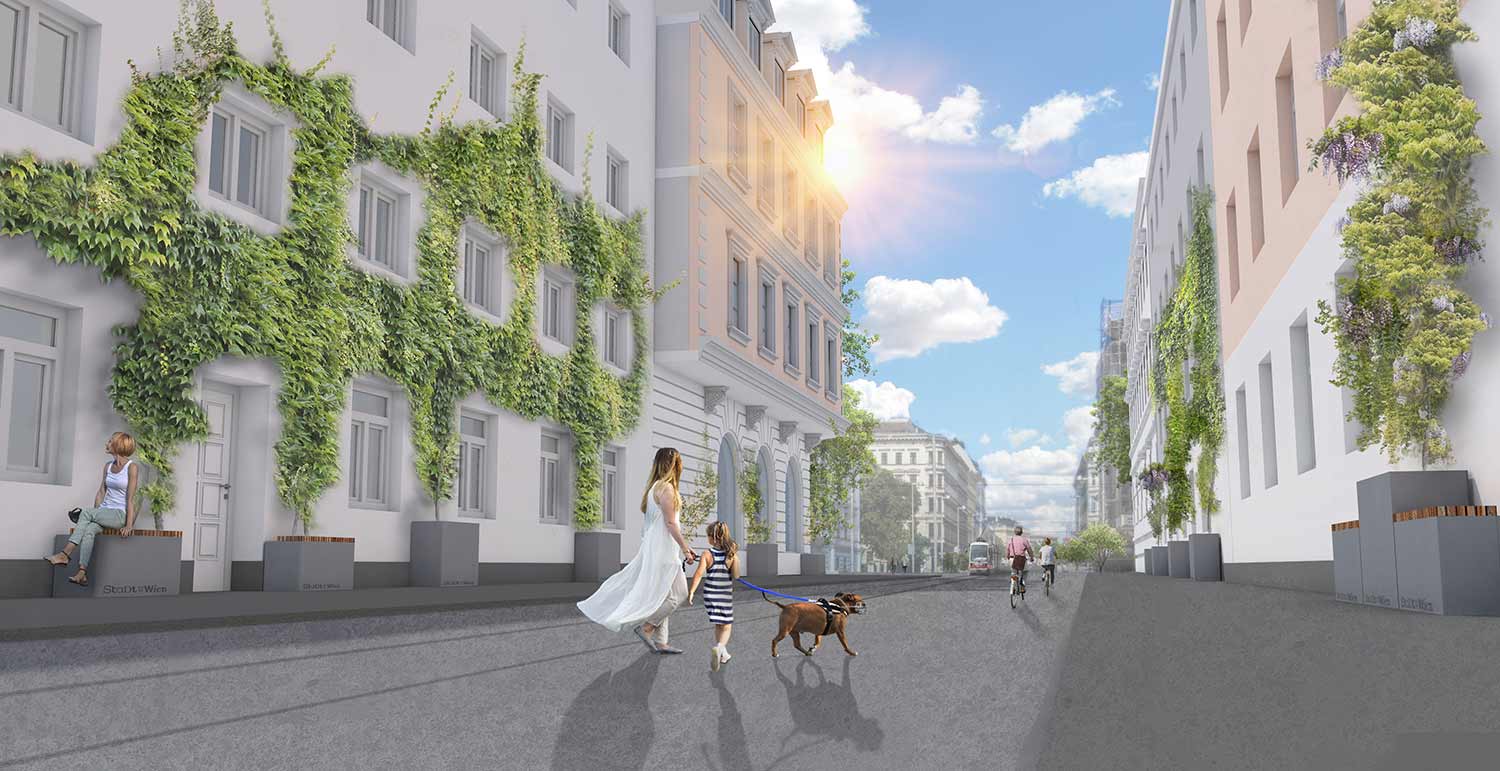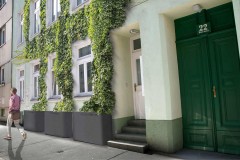Greened facades have a positive impact on the microclimate in the city. On hot summer days, they provide cooling, improve the air quality and contribute to the greater well-being of residents. There are many options for greening building facades in Vienna, but in the past these have not included low-cost, simple solutions for retrofitting on existing buildings. Complicated application and approval processes with the relevant authorities and within tenant groups make it more difficult to realise green facades in urban environment.
The research project “50 Green Houses”* was developed, in collaboration with the City of Vienna, as an integrated solution for simple greening of building facades in the city. The system consists of the BeRTA module, i.e. a low-cost planter system with supports for climbing plants and corresponding maintenance concept. The approval process is handled by an innovative submission tool with a quick-check function for the relevant authorities. This links the city administration, owners and residents and provides support during implementation of the project. An online manual leads applicants through the submission process step by step and requests all the necessary data on the planned project in a quick and straightforward manner. All requirements of the relevant municipal departments have been taken into consideration in the intelligent submission form, to enable quick and easy explanation by the project team for the authorities.
Owing to high demand, the greening system will be available to residents throughout Vienna in the future. It will be supported by the City of Vienna’s green facade programme.
First prototypes in Vienna
This integrated solution is currently being implemented in a co-creation process with 50 demo modules in the district of Favoriten. Interested parties were invited to make submissions in early 2019, in order to receive a BeRTA green facade module free of charge. “BeRTA” stands for the elements of the module in German: “Begrünung – Rankhilfe – Trog – All-in-One”, or “Greening – Climbing support – Trough – All-in-one” in English.
The module consists of a 300-litre planting container, a climbing support (where required or technically feasible), substrate and two climbing plants, to provide around 8 m² of greening. The data entered online help the experts to select the individual module configuration for the building in question: plants are selected to suit the location and nature of the facade. Delivery, assembly and training for maintaining the greened facade are included.
Scientific evaluation
The first 50 green facade modules are being scientifically supervised. This monitoring covers both the technical (and horticultural) aspects and the social impact of facade greening in the target district of Innerfavoriten, and supplies data for decision-makers, planners, builders and developers. On the basis of these findings, this innovative model should also be transferable to other cities.
https://50gh.at/
* Project partners
tatwort Nachhaltige Projekt GmbH (management), GrünStattGrau Forschungs- und Innovations GmbH (grünstattgrau.at), Die Wiener Volkshochschulen GmbH – DIE UMWELTBERATUNG, Vienna Environmental Protection Department (MA22) of the City of Vienna, University of Natural Resources and Life Sciences (BOKU), Department of Civil Engineering and Natural Hazards, Institute of Engineering Biology and Landscaping (IBLB)


